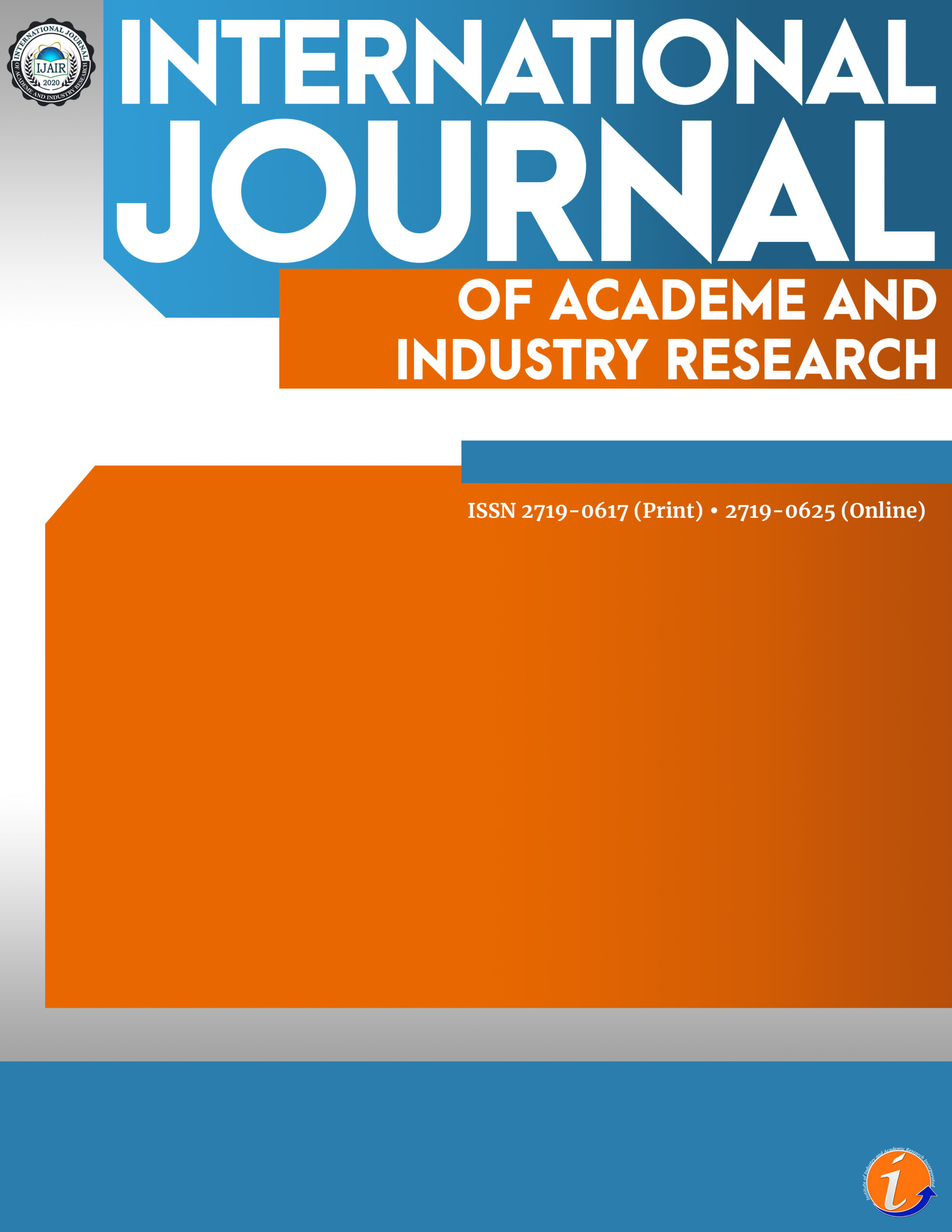The study examined the personal financial activities of private secondary school teachers in selected municipalities of the 4th congressional district of Quezon in the Philippines. A descriptive quantitative research design, cluster sampling, and a researcher-made survey questionnaire collected online were all used in the study. Data focused on the financial knowledge, financial behavior, and financial attitude of the respondents. It employed both descriptive and inferential statistical methods. The theories of human capital, self-efficacy, goal-setting, and the financial literacy modelled this study. The majority of respondents are female-married, young professionals teaching either English or Social Sciences holding a permanent position as Teacher I with less than five years of service. An increase in saving found an association in the field of specialization. A weak positive association exists between basic good financial practices and the building of financial safety nets. Data from a survey showed that significant number of respondents are vulnerable to financial distress. Moderation of financial practices and literacy is an indication of poor financial management. Data attest the need to take steps and intervene through financial training and education to recreate the existing method of treating resources.
financial literacy, financial knowledge, financial behaviour, financial attitude, financial safety net
Victorino P. Pinawin. LPT, MBA. Teacher - II, Gumaca National High School, Department of Education (DepEd) – Division of Quezon
This paper is a finalist in the IIARI Research Competition (IRC) – 2021 Category 3 – Graduate
Adams, L. (2011, December 7). How to build safety nets for your finances. Quick and Dirty Tips. https://www.quickanddirtytips.com/money-finance/saving-spending/how-to-build-safety-nets-for-your-personal-finances
Askar, M. W., Ouattara, B., & Zhang, Y. F. (2020). Financial literacy and poverty reduction: The case of Indonesia [PDF]. Asian Development Bank. https://www.adb.org/
Astari, D. W., & Kismiantini. (2019). Analysis of factors affecting the health insurance ownership with a binary logistic regression model. Journal of Physics: Conference Series, 1320, 012011. https://doi.org/10.1088/1742-6596/1320/1/012011
Azmi, N. F. B., & Ramakrishnan, S. (2018). Relationship between financial knowledge and spending habits among faculty of management staff. Journal of Economic Info, 5(3), 1–6. https://doi.org/10.31580/jei.v5i3.102
Belbase, A., Coe, N. B., & Wu, A. Y. (2015). Overcoming barriers to life insurance coverage: A behavioral approach [PDF]. Center for Retirement Research. https://crr.bc.edu/wp-content/uploads/2015/06/wp_2015-5.pdf
Clements, S. (2018, September 26). The How-To: Financial Literacy Education For Employees. Entrepreneur. https://www.entrepreneur.com/article/320644
Cordero, T. (2020, September 23). Filipinos financially unprepared for critical illness —Manulife Philippines study. GMA News Online. https://www.gmanetwork.com/
Fremstad, W., & Vallas, R. (2013, May 30). The facts on social security disability insurance and supplemental security income for workers with disabilities. Center for American Progress. https://www.americanprogress.org/
Gillies D. (2015) Human Capital Theory in Education. In: Peters M. (eds) Encyclopedia of Educational Philosophy and Theory. Springer, Singapore. https://doi.org/10.1007/978-981-287-532-7_254-1
Hasler, A., & Lusardi, A. (2017). The gender gap in financial literacy: A global perspective [PDF]. Global Financial Literacy Excellence Center. https://gflec.org/wp-content/uploads/2017/07/The-Gender-Gap-in-Financial-Literacy-A-Global-Perspective-Report.pdf
Huston, S. J. (2010). Measuring Financial Literacy. Journal of Consumer Affairs, 44(2), 296–316. https://doi.org/10.1111/j.1745-6606.2010.01170.x
Johan, I., Rowlingson, K., & Appleyard, L. (2020). The effect of personal finance education on the financial knowledge, attitudes and behavior of university students in Indonesia. Journal of Family and Economic Issues. https://doi.org/10.1007/s10834-020-09721-9
Kartikasari, S., & Muflikhati, I. (2016). The influence of family characteristics, family financial management, and saving intensity on the size of farmer families’ saving at Ciaruteun Ilir Villages. Journal of Consumer Sciences, 1(2), 13. https://doi.org/10.29244/jcs.1.2.13-27
Lusardi, A. (2019). Financial literacy and the need for financial education: Evidence and implications. Swiss Journal of Economics and Statistics, 155(1). 10.1186/s41937-019-0027-5
Lusardi, A., Michaud, P.-C., & Mitchell, O. S. (2015). Using a life cycle model to evaluate financial literacy program effectiveness. SSRN Electronic Journal. https://doi.org/10.2139/ssrn.2707618
Lusardi, A., Mitchell, O., & Curto, V. (2014). Financial literacy and financial sophistication in the older population. Journal of Pension Economics and Finance, 13(4), 347–366. https://doi.org/10.1017/s1474747214000031
Mbarire, T. T., & Ali, A. I. (2014). Research Journal of Finance and Accounting (Online). ISSN 2222-2847. https://portal.issn.org/resource/ISSN/2222-2847.
Mctish, A. (2018, January 13). Time value of money & rule of 72. Real World Made Easy. https://realworldmadeeasy.com/time-value-of-money/
Montalbo, I. C., Pogoy, A. M., Villarante, G. A., & Pepito, G. M. (2017). Financial Literacy of Professional and Pre-Service Teachers in the Philippines. Journal of Global Economics, 05(04). https://doi.org/10.4172/2375-4389.1000267
Muizzuddin, M., Taufik, T., Ghasarma, R., Putri, L., & Adam, M. (2017). Financial literacy; strategies and concepts in understanding the financial planning with self-efficacy theory and goal-setting theory of motivation approach. International Journal of Economics and Financial Issues.
Ong, Q., Theseira, W., & Ng, I. Y. (2019, April 9). Reducing debt improves psychological functioning and changes decision-making in the poor. PNAS. https://www.pnas.org/content/116/15/7244
Potrich, A.C.G., Vieira, K.M. & Mendes-Da-Silva, W. (2016). Development of a financial literacy model for university students. Management Research Review, 39 (3), 356-376. https://doi.org/10.1108/MRR-06-2014-0143
Potrich, A. C., Vieira, K. M., & Kirch, G. (2015). Determinants of financial literacy: Analysis of the influence of socioeconomic and demographic variables. Revista Contabilidade & Finanças, 26(69), 362–377. https://doi.org/10.1590/1808-057×201501040
Rose, S. (2018, October 19). 7 expert perspectives on why financial literacy is important. OppLoans. https://www.opploans.com/
Sabri, M. F. F. (2011). (Dissertation). Pathways to financial success: Determinants of financial literacy and financial well-being among young adults. Retrieved https://lib.dr.iastate.edu/cgi/viewcontent.cgi?article=2208&context=etd
Sedgwick, P. (2014). Cluster sampling. BMJ, 348(2). https://doi.org/10.1136/bmj.g1215
Solomon, S. (2017, March 20). Understanding and changing spending habits. Money Habitudes. https://www.moneyhabitudes.com/
Surendar, G., & Subramanya Sarma, V. V. (2018). Financial literacy and financial planning among teachers of higher education – A study of critical factors of select variables. International Journal of Pure and Applied Mathematics, 118(18),1627-1649. https://acadpubl.eu/jsi/2018-118-18/articles/18b/54.pdf
Tyler, B. D. (2017). Using the time value of the money decision tree to calculate an athlete’s contract offers. Case Studies in Sport Management, 6(1), 48–57. https://doi.org/10.1123/cssm.2017-0026
Thomas, L. (2020, September 17). Cluster sampling | A simple step-by-step guide with examples. Scribbr. https://www.scribbr.com/
Villafuerte, F. (2015, April 19). The state of financial literacy in the Philippines: Ready to be rich. https://fitzvillafuerte.com/the-state-of-financial-literacy-in-the-philippines.html
Ward, A. F., & Lynch, J. G. (2018). On a need-to-know basis: How the distribution of responsibility between couples shapes financial literacy and financial outcomes. Journal of Consumer Research, 45(5), 1013–1036. https://doi.org/10.1093/jcr/ucy037
Weedige, S. S., Ouyang, H., Gao, Y., & Liu, Y. (2019). Decision Making in Personal Insurance: Impact of Insurance Literacy. Sustainability, 11(23), 6795. https://doi.org/10.3390/su11236795
Cite this article:
Pinawin, V.P. (2022). Recreating financial literacy of private secondary school teachers. International Journal of Accounting, Finance and Entrepreneurship, 3(1), 1-20. https://doi.org/10.53378/352869
License:
![]()
This work is licensed under a Creative Commons Attribution (CC BY 4.0) International License.










